-
 Bitcoin
Bitcoin $76,654.6360
-7.12% -
 Ethereum
Ethereum $1,502.0829
-15.11% -
 Tether USDt
Tether USDt $0.9995
0.00% -
 XRP
XRP $1.7730
-13.91% -
 BNB
BNB $544.1597
-6.75% -
 USDC
USDC $1.0000
0.02% -
 Solana
Solana $102.4707
-11.10% -
 TRON
TRON $0.2260
-5.55% -
 Dogecoin
Dogecoin $0.1398
-13.45% -
 Cardano
Cardano $0.5447
-13.02% -
 UNUS SED LEO
UNUS SED LEO $8.9156
-1.19% -
 Toncoin
Toncoin $3.0334
-7.50% -
 Chainlink
Chainlink $10.8622
-12.21% -
 Stellar
Stellar $0.2212
-10.25% -
 Avalanche
Avalanche $15.6219
-8.32% -
 Shiba Inu
Shiba Inu $0.0...01097
-7.56% -
 Sui
Sui $1.8534
-12.28% -
 MANTRA
MANTRA $6.1325
-1.44% -
 Hedera
Hedera $0.1377
-10.68% -
 Polkadot
Polkadot $3.4190
-11.84% -
 Dai
Dai $0.9999
0.00% -
 Bitcoin Cash
Bitcoin Cash $263.9712
-9.33% -
 Ethena USDe
Ethena USDe $0.9987
-0.03% -
 Litecoin
Litecoin $67.4159
-14.99% -
 Bitget Token
Bitget Token $3.9261
-10.97% -
 Pi
Pi $0.5602
-9.91% -
 Monero
Monero $193.8564
-8.31% -
 Hyperliquid
Hyperliquid $10.3167
-8.15% -
 Uniswap
Uniswap $4.9596
-11.99% -
 OKB
OKB $49.8609
-6.94%
What else can governance tokens do besides voting? Why do project parties have to issue one?
Governance tokens incentivize participation, enable decentralized governance, enhance security, and drive economic value, making them essential for community-driven projects.
Apr 06, 2025 at 06:42 pm
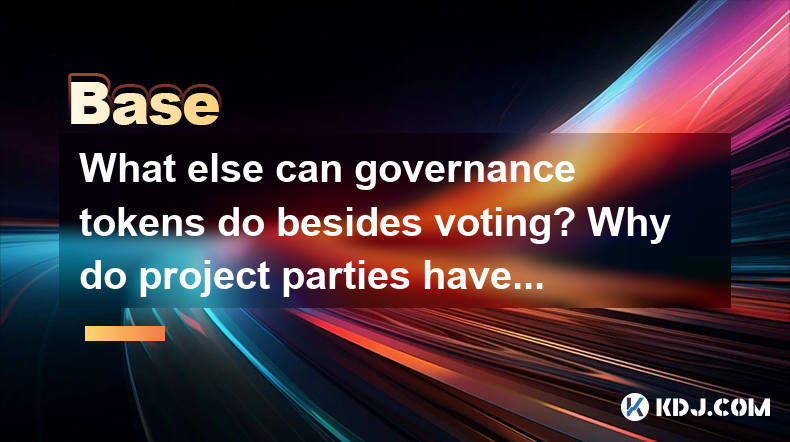
Governance tokens have become a pivotal element in the decentralized ecosystem, serving functions that extend far beyond the simple act of voting. While voting is a crucial aspect of these tokens, allowing token holders to influence the direction and decisions of a project, there are numerous other roles that governance tokens play within the cryptocurrency space. This article delves into the multifaceted uses of governance tokens and explores why project parties find it necessary to issue them.
Incentivizing Participation and Engagement
Governance tokens are not just tools for decision-making; they are also powerful instruments for incentivizing participation and engagement within a project's community. By holding these tokens, users are often granted access to exclusive features, rewards, or even a share of the project's revenue. This mechanism encourages users to actively participate in the ecosystem, contributing to its growth and sustainability.
- Earn Rewards: Many projects distribute additional tokens or other forms of rewards to users who engage with the platform, such as staking their governance tokens or participating in community events.
- Access to Exclusive Features: Token holders might gain access to premium features, such as advanced trading tools or priority access to new services.
- Revenue Sharing: Some projects allocate a portion of their revenue to be distributed among governance token holders, providing a financial incentive to hold and use the tokens.
Facilitating Decentralized Governance
The primary function of governance tokens is to enable decentralized governance, allowing a project to operate without a central authority. This is achieved by giving token holders the power to propose, vote on, and implement changes to the project's protocol. However, the role of governance tokens in this process goes beyond mere voting.
- Proposal Submission: Token holders can submit proposals for changes or improvements to the project, ensuring that the community's voice is heard.
- Voting Power: The number of tokens held often determines the voting power of an individual, aligning the interests of the project with those who have a significant stake in its success.
- Implementation of Changes: Once a proposal is approved through voting, the changes can be implemented, reflecting the collective decision of the community.
Enhancing Security and Trust
Governance tokens also play a crucial role in enhancing security and trust within a project. By distributing decision-making power among a wide range of token holders, projects can reduce the risk of centralized control and potential manipulation. This decentralized approach fosters a sense of trust and security among users, as they know that no single entity can unilaterally alter the project's direction.
- Decentralized Control: The distribution of governance tokens ensures that no single party can dominate the decision-making process, reducing the risk of malicious actions.
- Community Oversight: Token holders can monitor and challenge any suspicious activities, adding an extra layer of security to the project.
- Transparency: The voting and proposal processes are typically transparent, allowing all participants to see how decisions are made and who is influencing them.
Driving Economic Value
Another significant function of governance tokens is their ability to drive economic value within a project's ecosystem. These tokens often serve as a form of currency within the platform, used for transactions, staking, or other economic activities. This creates a self-sustaining economy where the value of the tokens is directly tied to the health and activity of the project.
- Transaction Medium: Governance tokens can be used to pay for services or products within the platform, increasing their utility and demand.
- Staking and Yield Farming: Users can stake their tokens to earn additional rewards, further incentivizing holding and participation.
- Liquidity Provision: Tokens can be used to provide liquidity to decentralized exchanges or other platforms, enhancing the project's overall liquidity and market presence.
Why Project Parties Issue Governance Tokens
Given the multifaceted roles that governance tokens play, it becomes clear why project parties find it necessary to issue them. Governance tokens are essential for creating a decentralized, community-driven project that can operate effectively and securely. They provide a mechanism for aligning the interests of the project with those of its users, fostering a sense of ownership and participation.
- Community Engagement: Issuing governance tokens helps projects engage their community, encouraging active participation and loyalty.
- Decentralization: Tokens enable projects to decentralize their governance, reducing reliance on a central authority and enhancing security.
- Economic Incentives: By creating an economy around the tokens, projects can drive value and incentivize users to contribute to the ecosystem.
- Fundraising and Investment: Governance tokens can be used to raise funds for the project, attracting investment and support from the community.
Frequently Asked Questions
Q: Can governance tokens be used for purposes other than governance within a project?
A: Yes, governance tokens can serve multiple purposes within a project. Besides governance, they can be used as a medium of exchange, for staking and yield farming, and to access exclusive features or rewards. Their utility extends beyond voting, making them a versatile tool in the cryptocurrency ecosystem.
Q: How do governance tokens affect the value of a project?
A: Governance tokens can significantly impact a project's value by creating a self-sustaining economy. As more users engage with the platform and use the tokens for various activities, the demand for the tokens increases, potentially driving up their value. Additionally, the decentralized governance model can enhance trust and security, further contributing to the project's overall value.
Q: Are there any risks associated with governance tokens?
A: Yes, there are risks associated with governance tokens. One major risk is the potential for low voter turnout, which can lead to decisions being made by a small, unrepresentative group of token holders. Additionally, if the tokens are not widely distributed, there is a risk of centralization, where a few large holders can dominate the decision-making process. Projects must carefully design their governance systems to mitigate these risks.
Q: How can someone acquire governance tokens?
A: Governance tokens can be acquired in several ways. They can be purchased on cryptocurrency exchanges, received as rewards for participating in the project's ecosystem, or obtained through initial token offerings or airdrops. The specific method of acquisition depends on the project and its distribution strategy.
Disclaimer:info@kdj.com
The information provided is not trading advice. kdj.com does not assume any responsibility for any investments made based on the information provided in this article. Cryptocurrencies are highly volatile and it is highly recommended that you invest with caution after thorough research!
If you believe that the content used on this website infringes your copyright, please contact us immediately (info@kdj.com) and we will delete it promptly.
- XRP Analysis: What the Lower Timeframes Tell Us
- 2025-04-07 21:35:12
- Ozak AI (OZAK) Price Prediction: Can It Hit $1?
- 2025-04-07 21:35:12
- Cryptocurrency prices sank early Monday (April 7) in Asia, collateral damage in America's trade war.
- 2025-04-07 21:30:12
- Meme Projects Like Dogecoin (DOGE), Shiba Inu (SHIB), and Bonk (BONK)
- 2025-04-07 21:30:12
- HashBeat App: Top Regulated Crypto Cloud Mining Platform in 2025 and Offers Free Bitcoin Mining Rewards with Daily Payouts
- 2025-04-07 21:25:12
- Shiba Inu (SHIB) Price Prediction: Will the Memecoin Bounce Back?
- 2025-04-07 21:25:12
Related knowledge
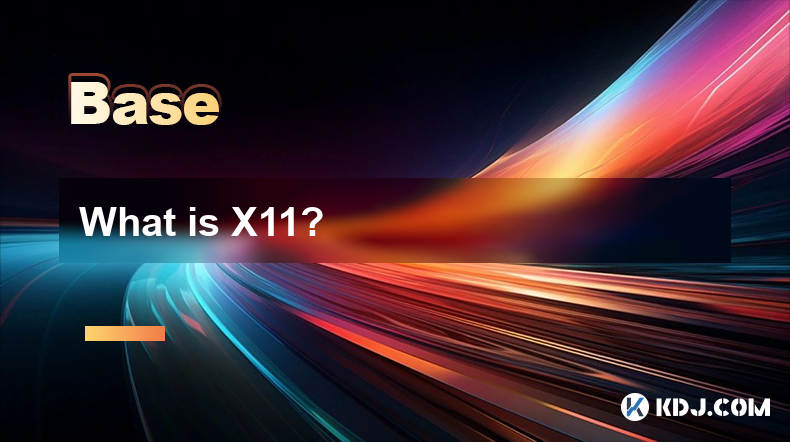
What is X11?
Apr 07,2025 at 09:22pm
What is X11? X11 is a cryptographic hash function used in various cryptocurrencies, most notably in the Dash cryptocurrency. It is designed to provide a high level of security and efficiency, making it a popular choice for blockchain networks. The X11 algorithm is unique because it uses a chain of 11 different hashing algorithms, which enhances its secu...
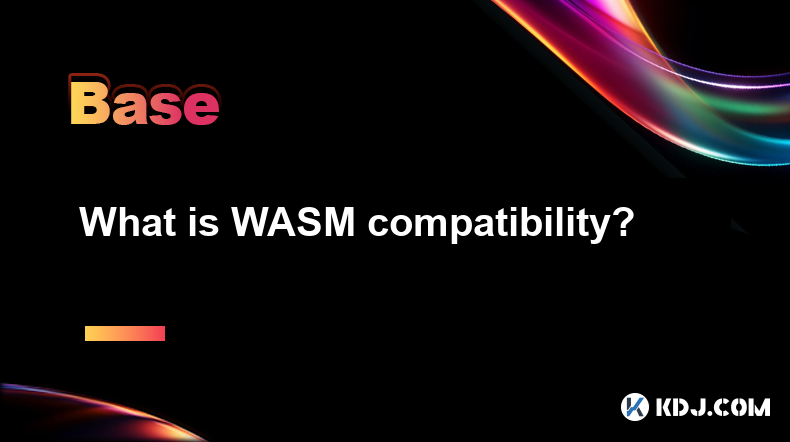
What is WASM compatibility?
Apr 07,2025 at 09:08pm
What is WASM Compatibility? WASM, or WebAssembly, is a binary instruction format for a stack-based virtual machine. It is designed to be a portable compilation target for programming languages, enabling deployment on the web for client and server applications. In the context of cryptocurrencies and blockchain technology, WASM compatibility refers to the...
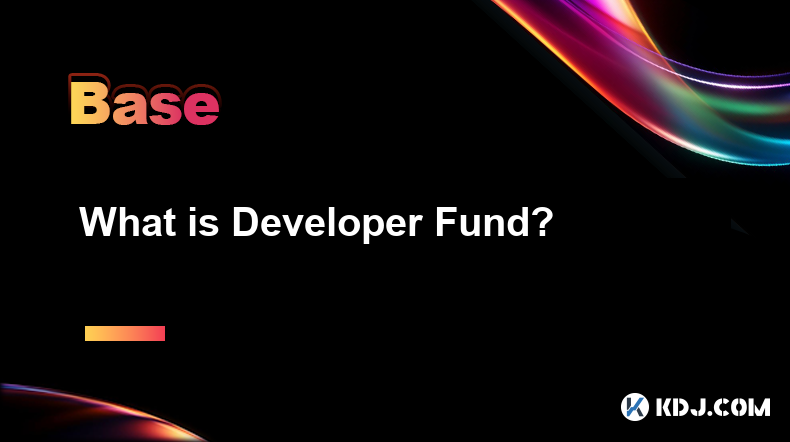
What is Developer Fund?
Apr 07,2025 at 08:21pm
A Developer Fund in the cryptocurrency ecosystem is a pool of resources, typically in the form of cryptocurrency, set aside to support the development and maintenance of a blockchain project. These funds are crucial for the growth and sustainability of blockchain networks, as they enable developers to work on improving the protocol, fixing bugs, and add...
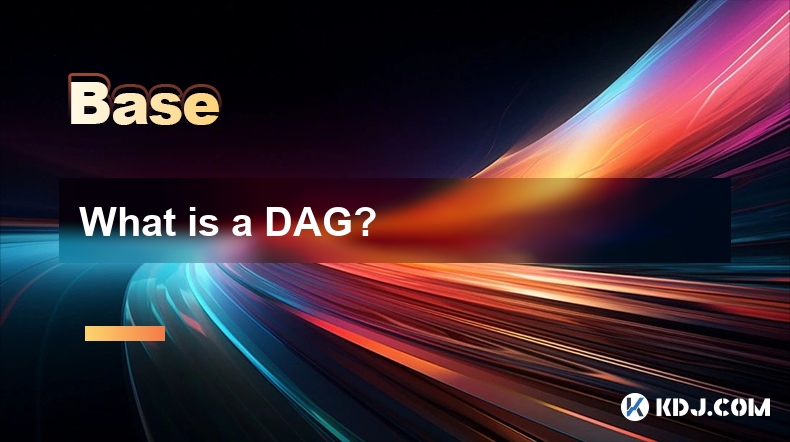
What is a DAG?
Apr 07,2025 at 08:15pm
A Directed Acyclic Graph, commonly known as a DAG, is a fundamental concept in the world of cryptocurrencies and blockchain technology. Unlike traditional blockchain structures that rely on a linear chain of blocks, a DAG uses a more complex and interconnected network of nodes. This structure allows for faster transaction processing and scalability, mak...
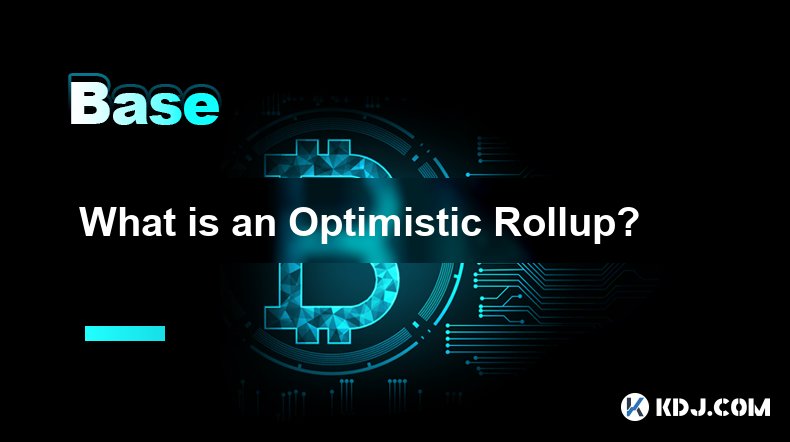
What is an Optimistic Rollup?
Apr 07,2025 at 07:57pm
An Optimistic Rollup is a layer 2 scaling solution designed to enhance the efficiency and scalability of blockchain networks, particularly Ethereum. This technology aims to process transactions off the main Ethereum chain, thereby reducing congestion and lowering transaction fees. The term 'optimistic' stems from the approach taken by these rollups, whi...
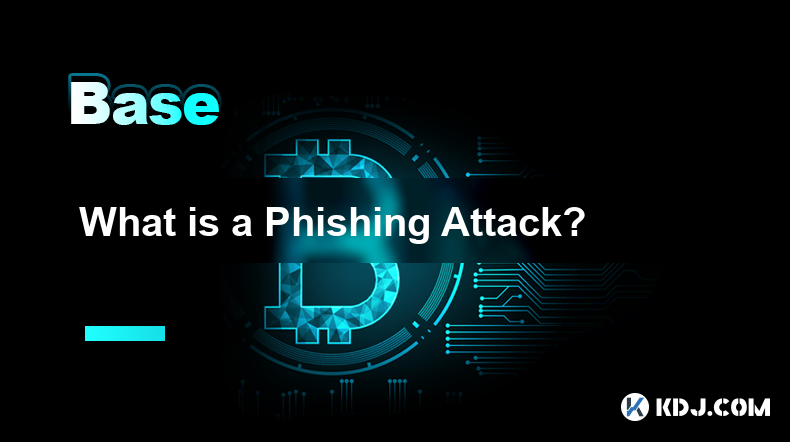
What is a Phishing Attack?
Apr 07,2025 at 09:42pm
Phishing attacks are a prevalent and dangerous threat within the cryptocurrency circle, aimed at deceiving users into revealing sensitive information or transferring their digital assets to malicious actors. These attacks exploit human vulnerabilities rather than technical weaknesses, making them particularly effective and hard to defend against. Unders...

What is X11?
Apr 07,2025 at 09:22pm
What is X11? X11 is a cryptographic hash function used in various cryptocurrencies, most notably in the Dash cryptocurrency. It is designed to provide a high level of security and efficiency, making it a popular choice for blockchain networks. The X11 algorithm is unique because it uses a chain of 11 different hashing algorithms, which enhances its secu...

What is WASM compatibility?
Apr 07,2025 at 09:08pm
What is WASM Compatibility? WASM, or WebAssembly, is a binary instruction format for a stack-based virtual machine. It is designed to be a portable compilation target for programming languages, enabling deployment on the web for client and server applications. In the context of cryptocurrencies and blockchain technology, WASM compatibility refers to the...

What is Developer Fund?
Apr 07,2025 at 08:21pm
A Developer Fund in the cryptocurrency ecosystem is a pool of resources, typically in the form of cryptocurrency, set aside to support the development and maintenance of a blockchain project. These funds are crucial for the growth and sustainability of blockchain networks, as they enable developers to work on improving the protocol, fixing bugs, and add...

What is a DAG?
Apr 07,2025 at 08:15pm
A Directed Acyclic Graph, commonly known as a DAG, is a fundamental concept in the world of cryptocurrencies and blockchain technology. Unlike traditional blockchain structures that rely on a linear chain of blocks, a DAG uses a more complex and interconnected network of nodes. This structure allows for faster transaction processing and scalability, mak...

What is an Optimistic Rollup?
Apr 07,2025 at 07:57pm
An Optimistic Rollup is a layer 2 scaling solution designed to enhance the efficiency and scalability of blockchain networks, particularly Ethereum. This technology aims to process transactions off the main Ethereum chain, thereby reducing congestion and lowering transaction fees. The term 'optimistic' stems from the approach taken by these rollups, whi...

What is a Phishing Attack?
Apr 07,2025 at 09:42pm
Phishing attacks are a prevalent and dangerous threat within the cryptocurrency circle, aimed at deceiving users into revealing sensitive information or transferring their digital assets to malicious actors. These attacks exploit human vulnerabilities rather than technical weaknesses, making them particularly effective and hard to defend against. Unders...
See all articles





















































































